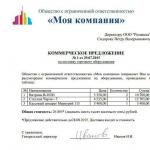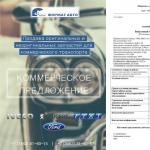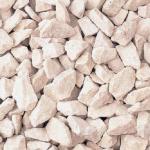Supplier Workshop: Choosing a Strategy and Evaluating the Effectiveness of Promotions in Retail Chains - New Retail
10:00 22/08/2016
How can a supplier evaluate the effectiveness of a promotion in a retail chain? Does the calculation of the effectiveness of a promotion only depend on financial indicators and how much sales will increase, or are there other indicators of effectiveness? How to calculate efficiency in the absence of reliable statistical data? What strategy should be followed and why when choosing promotional items for promotions? Let's try to answer all these questions.
When evaluating the planning of a promotional action in retail chains and evaluating its effectiveness, suppliers face a number of significant problems. How great it would be if retail chains shared with suppliers all the necessary statistical information they have:
- the volume and number of sales of the promotional product;
- the value of the average check, in which there is a promotional product;
- the average amount of a promotional product in one check;
- sales volume of products in the relevant category;
- the value of the average check in the corresponding category;
- the average number of goods from the corresponding category in one receipt;
- the total number of customers (checks) purchasing any product in the distribution network;
Of course, the supplier needs all these parameters in the dynamics, covering the period preceding the promotion, the period of the promotion itself and the period following the promotion in the context of specific points of sale. Knowing the costs of running a promotion, taking into account the frequency of use by customers of promotional products and their competitors, and having all of the above statistics, the supplier can quite easily receive basic financial, incl. and related to profitability, and quality indicators of the promotion.
However, retail chains never share information about suppliers' competitors, citing trade secrets, and are very reluctant to share other information with suppliers, especially related to category sales or retail traffic, so suppliers are faced with the absence or low reliability of key statistical information on the promotion. required for a complete analysis. In fact, at best, they receive only information about the sales volume of the promotional product and, sometimes, the number of buyers and the average check in which the promotional product is present. However, few suppliers know that some retail chains still provide their large suppliers with the so-called "dynamic cubes" - huge multidimensional arrays of detailed information, including sales data in a category over a long period of time, incl. h. and information on competitors' actual sales and promotions.

At the same time, such data is very expensive and only very large supplier companies can acquire it, as well as competently process and use it. What should other suppliers do in this case?
Some vendors are trying to get the required data by conducting "field research" and interviewing some small part of the buyers, and based on the data they build some conclusions. At the same time, the reliability of such data has always been and remains very low, and it is very risky to draw any strategic conclusions based on such information that could affect the business as a whole.
Let's try to understand how you can evaluate the effectiveness of promotions in retail chains in the face of insufficient statistical information. This is very important, first of all, for the correct choice of the promotion strategy and the correct choice of the promotional product.
Promotions held in different sales channels are usually divided according to their main goals:
- quick sale of goods (for example, goods with a minimum shelf life, when warehouses are overstocked or simply to increase working capital);
- launching a new brand on the market;
- expansion of the assortment matrix in a particular sales channel;
- entering a new retail network or sales channel;
- increasing customer loyalty;
- raising awareness or brand support.
Quick sale of goods
The effectiveness of a "quick sale of goods" type of promotion is usually assessed as follows: when planning a promotion, the planned sales volume and the planned profit received through its implementation are calculated. The planned estimated profit is compared with the profit that would have been received by the supplier without the promotion, taking into account the higher price of the product, but lower sales and additional costs (expired goods, additional warehouse rental costs or borrowing costs).
If the profit from the promotion is greater than the profit from sales without the promotion, then a decision is made to conduct a promotion. Such a promotion is considered successful if, as a result, the profit from the promotion, taking into account all costs, exceeded the calculated profit from the sale of goods without the promotion. The success of such a promotion can also be assessed as a percentage, as the ratio of the actual profit received from the promotion to the estimated profit without the promotion. Also, very often there are cases when we are not talking about profit at all, but about minimizing losses. At the same time, the amount of losses during promotional events and the planned amount of losses without holding the promotion are compared.
Launching a new brand on the market, expanding the assortment matrix in a specific retail chain or entering a retail chain
The main purpose of promotions of this type is to acquaint as many buyers as possible with a new product introduced to the market or to draw the attention of buyers to the expansion of the manufacturer's product line in this particular retail chain. The effectiveness of such a promotion is measured by comparing the actual number of sales of goods (the number of checks with a promotional product in the period after the promotion, taking into account the frequency of consumption of the promotional product) with the planned number of new customers, which are established based on actual sales data in other retail chains , sales channels or other product of the manufacturer. The percentage ratio of actual sales to planned ones will be the efficiency coefficient of promotions of this type. Sometimes, some customers also use metrics from similar promotions or category KPIs that the buyer has to compare with the actual results of the promotion. However, in these cases, when formulating a goal, the customer does not always focus on his own interests, and his goals begin to depend on other market participants.
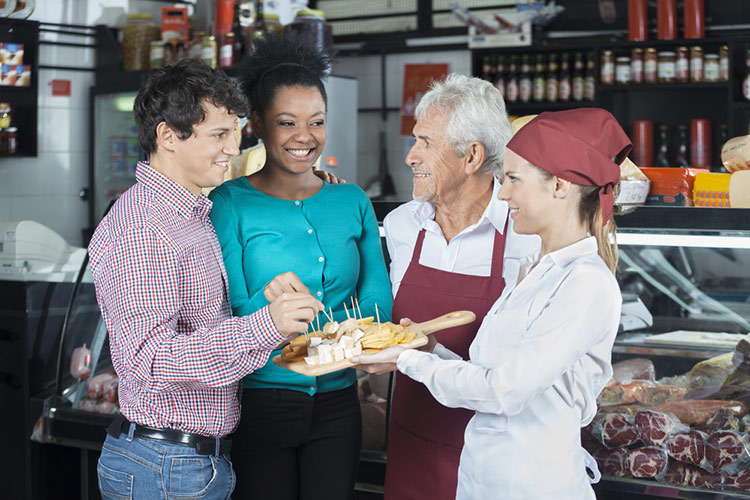
Increase awareness or support brand and customer loyalty
One of the main problems in evaluating the effectiveness of these types of promotions is that if the supplier can calculate the costs of this promotion quite simply, then here are the tools to assess how much loyalty and brand awareness have grown and how much profit the supplier received due to this. this or that period, the manufacturing company simply does not have. Therefore, suppliers either generally refuse to use more or less reliable data on customer loyalty or try to use their own channels of communication with customers (primarily websites).
Of course, it would be great if the buyers of the supplier's products were so motivated that they would regularly visit prize centers, send SMS with codes located on the goods and independently enter social networks or the website, registering and entering reliable data with the date and place purchases and the quantity of the item purchased, or clicked on the button of the particular chain from which they purchased the item. Then the supplier would have a system that allows you to objectively evaluate customer loyalty based on statistical data. But in order to motivate buyers to visit the site and perform all these actions that the supplier needs, the supplier will have to spend a decent amount of money to create and implement such a system, as well as to change the packaging accordingly.
Today, however, cheaper and more widely used technologies have already appeared that can significantly change and simplify communications with customers. We are talking, first of all, about mobile applications that use the augmented reality mechanism.
Given the above, it must be admitted that the supplier does not and will not be able to reliably measure and evaluate the effectiveness of promotions aimed at increasing brand awareness and customer loyalty without creating their own effective tools for measuring and managing brand loyalty and awareness.
The specifics of promotions in retail chains and the right choice of strategy
Suppliers are well aware that all price promotions in retail chains are always carried out only at their expense, and retail chains never pay extra to manufacturers. Of course, some chains have their own loyalty systems (cumulative discounts and other elements of loyalty), but when it comes to the price of goods on the shelf, all discounts are “paid” by the manufacturer himself. Statistics show that up to 90% of suppliers cooperating with retail chains do not have products with sufficient margin margin and incur financial losses during promotions.
However, sometimes promotions can be unprofitable for the retail chains themselves - in about 60% of the cases of promotions, the chains lose money, because. a decrease in the price of a certain product, although it leads to an increase in sales of this product, but at the same time leads to a decrease in the overall profit of the trading network. The fact is that buyers, buying cheaper promotional goods in large quantities, begin to buy significantly less similar standard items, and given the tendency for retail chains to reduce their own margins due to competition with other networks, the retail chain often simply does not receive the profit that it I would have received without running a promotion. And even when buyers who purchase promotional goods spend more money on average than usual, this still does not bring profit to retail chains.
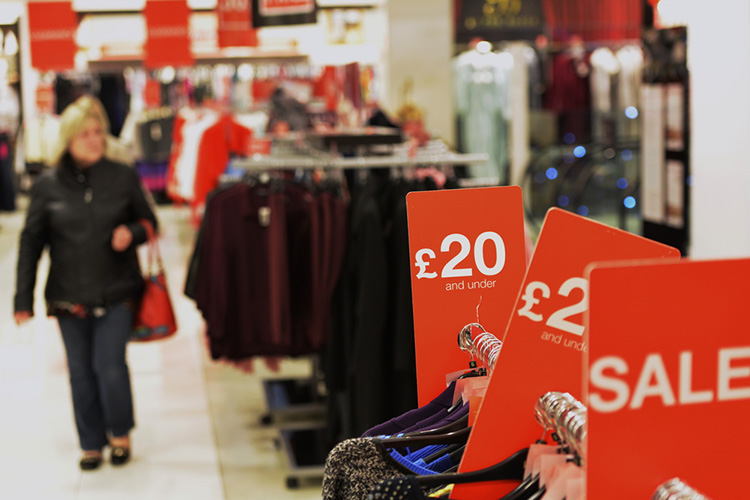
How do retail chains consider the effectiveness of promotions? They take all checks that contain a "promotional" product for the period during the promotion and for the previous period and compare - the average check, the number of positions in the check, the number of checks (purchases) of the promotional product, the total number of purchases. Based on the available statistical data, one can draw conclusions about a decrease or increase in the client flow, a change in the size of the average check, etc. Of course, there are other parameters that retail chains evaluate during promotions - primarily financial indicators, which include the amount of costs, the frequency of purchases (if they have their own loyalty systems), etc.
But when it comes to analyzing the effectiveness of a promotion in a distribution network specifically for a supplier, then the main task for the supplier is to minimize costs. And here, in the conditions of limited statistical data, the correct choice of strategy acquires special significance.
The fact is that usually in the supplier's assortment matrix there are several different products that may differ from each other in the following key parameters:
- marginality;
- turnover;
- market position and market competition in the relevant product segments.
Ideally, if the supplier has the appropriate positions in the assortment, then he should choose for the promotion a promotional product with high marginality and turnover and a small market share in which there are no clear leading players.
Goods with low turnover and high margins are best promoted not by lowering the price, which does not always have a positive effect on the brand, but by increasing shelf space and conducting non-price promotions.
